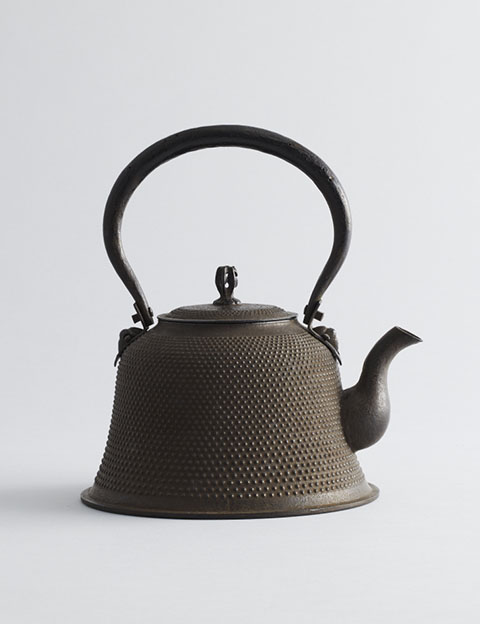NAMBU Tekki (Cast Ironwork)

Present-day Morioka is at the center of an area which was controlled by the Nambu clan at the beginning of the 17th century. It was during this time that iron casters from Kyoto, who were skilled at making chagama water pots for the tea ceremony, were invited to Morioka. The skills they passed on to local casters were subsequently used to produce pots, weapons and more.
During the 18th century, chagama water pots were scaled down and refined, resulting in the now-famous Nambu cast-iron teakettles, which became widely used because of their lightness. Cast-iron kettles were also produced in neighboring Mizusawa, and during the Meiji era (1868-1912) there was an exchange of ideas and techniques between the two areas, leading to the cast-iron work from the region being called Nambu Tekki from the 1950s.
Nambu cast-iron is known for its durability and rich yet unassuming character. Its distinctive raised pattern attests to the warmth and spirit of the artisans who made it.
Feature
Nambu cast-iron products are known for their spartan design and durability. The intricate designs and pattern of hail-like stubs are a testimony to the warmth and spirit of the artisans who have devoted themselves to this craft.
How to make
Nambu cast-iron products are made using the following steps: molding, drying, pressing the decorations, hammering the surface, and applying lacquer. A key characteristic of Nambu cast-iron is its method for preventing rust by heating pieces to 900°C in a charcoal fire for 30 minutes.

